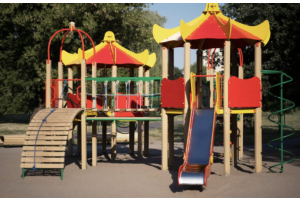How To Approach An Autism Diagnosis As A Parent

Receiving an autism diagnosis for your child can be a life-altering moment, bringing a mix of emotions ranging from confusion and fear to relief and determination. Navigating this journey as a parent involves understanding what autism is, seeking the right professional help, and knowing how to support your child in their unique needs. Here’s a guide on how to approach an autism diagnosis as a parent.
Understanding Autism
Autism Spectrum Disorder (ASD) is a complex neurodevelopmental condition that affects how a person communicates, interacts with others, and perceives the world. The term "spectrum" reflects the wide range of symptoms and behaviors associated with autism, which can vary significantly from one individual to another. Some children may have mild symptoms, while others might require substantial support in daily life.
Recognizing the Signs
The first step in the journey toward an autism diagnosis often begins with recognizing early signs. Parents might notice delays in speech, difficulties with eye contact, or challenges in social interactions. Other signs might include repetitive behaviors, intense focus on specific interests, or sensitivity to sensory stimuli like lights and sounds.
If you observe any of these behaviors, it's essential to consult with your pediatrician. Early intervention is key to helping children with autism develop the necessary skills to thrive, so raising concerns as soon as they arise is crucial.
Seeking a Professional Evaluation
Once you’ve noticed potential signs of autism, the next step is to seek a professional evaluation. A diagnosis is typically made by a team of specialists, including a pediatric neurologist, psychologist, and speech therapist, among others. They will conduct a comprehensive assessment, which may involve observing your child’s behavior, conducting interviews with family members, and using standardized tests.
In recent years, medical advancements have introduced new tools for diagnosing autism. One such tool is the use of a DNA Sequencing Machine. These machines analyze your child’s genetic material to identify any potential genetic markers associated with autism. While not all cases of autism have a clear genetic basis, this technology can provide valuable insights into the condition, helping to tailor more personalized treatment plans.
Processing the Diagnosis
Receiving an autism diagnosis can be overwhelming. It’s natural to feel a range of emotions, from denial and sadness to acceptance and hope. It’s important to give yourself time to process the information. Remember, a diagnosis does not change who your child is; it simply provides a framework to better understand their needs and how to support them.
Seek support from other parents who have gone through similar experiences, whether through local support groups or online communities. Sharing your journey with others who understand can be incredibly comforting and empowering.
Building a Support Network
Once you have a diagnosis, the next step is to build a support network for your child. This might include therapists, educators, and medical professionals who specialize in autism. Early intervention programs can be particularly beneficial, focusing on developing communication, social, and cognitive skills.
Work closely with your child’s school to ensure they receive the necessary accommodations, whether that means an Individualized Education Program (IEP) or other supportive measures.
In Closing
Approaching an autism diagnosis as a parent is undoubtedly challenging, but it is also the beginning of a journey toward better understanding and supporting your child. With the right information, support, and mindset, you can help your child navigate the world in a way that honors their unique abilities and potential.
- Family fitness (17)
- Technology (11)
- Date night (2)
- Dating (6)
- Diet (15)
- Child Fears (2)
- Mom Tips (222)
- Family meals and cooking (9)
- Sleep (32)
- Education (28)
- Decorating (52)
- Family Health (128)
- Finances (27)
- Caring and Empathy (4)
- Parenting (139)
- Getting Organized (16)
- Work and Career (73)
-
Family Home
(128)
- Garden (3)
- Sibling Tips (1)
- Bringing Home Baby (61)
- Fitness and Nutrition (23)
- Motherhood (21)
- Self Care (18)
- Family Fun (42)
- Gifts and Shopping (50)
- Travel (100)
- Mental Health (55)
- School and After School (44)
- Safety (77)
- Special Needs (8)
- Adoption (4)
- Allergies (2)
- Development and Toys (16)
- Pregnancy (56)
- Activities and Play (32)
- Finding Balance as a Parent (19)
- Beauty (24)
- Teens (9)
- Menopause (3)
- Teen Health (12)
- Homeschooling (16)
- Mom'Preneurs (8)
- Lifestyle (6)
- Starting a Family (2)
- Teen Life and Challenges (5)
- Fashion and Style (40)
- Divorce (7)
- Sports (11)
- Marriage and Wedding (14)
- Toddlers (6)
- Pets (38)
- Shopping (25)
- Nature and Outdoors (8)
- Moving (24)
- Family (17)
- Shopping or Gear (9)
- Food and Nutrition (37)
- Holiday Fun (8)
- Yoga (1)
- Party (14)
- Maternity (3)
- Surrogate (2)
- Meditation (3)
- Relationship (4)
- College (2)
- Dental (22)
- Kids Entertainment (4)
- Elderly and Extended Family (6)
- Cleaning (4)
- Swaddling (2)
- Postpartum (5)
- Birth (5)
- Baby Health (12)
- Mom Health (20)
- Mom Health (5)
- Beauty (9)
- Conception (1)
- ADHD (4)
- Feeding (1)
- Music (2)
- Exercise (5)
- Workout during pregnancy (1)
- Fertility (7)
- Culture (1)
- Conscious Living (1)
- Autism (3)
- Medical (16)
- Daycare (7)
- Loss and Grief (3)
- Spirituality (1)
- Registry (0)
- Prenatal (1)
- Breastfeeding (4)
- HRT and Hormones (1)
- Massage (1)
- Childcare (7)
- Nursery (3)
- Addiction (8)
- Renovation (11)
- Natural Medicine (1)
- Essential Oils (1)
- Business (4)
- Postnatal Care (4)
- Men's Health (2)
- Hair Care (2)
- IVF (2)
- Physical Body (1)
- Supplements (3)
- Sex and Sexuality (2)
- Baby Shower (3)
- Disability (2)
- Bath time (1)
- Environment (1)
- Flowers (0)
- Healing (5)
- Summer Fun (1)
- Alternative Healing (1)
- Legal (11)
- Keepsakes (1)
- Skin (2)
- Renovation (7)
- Home Design (9)
- Cars and Vehicles (2)
- Skin Care (2)
- Repairs (2)
- Stress (1)
- Security (1)






